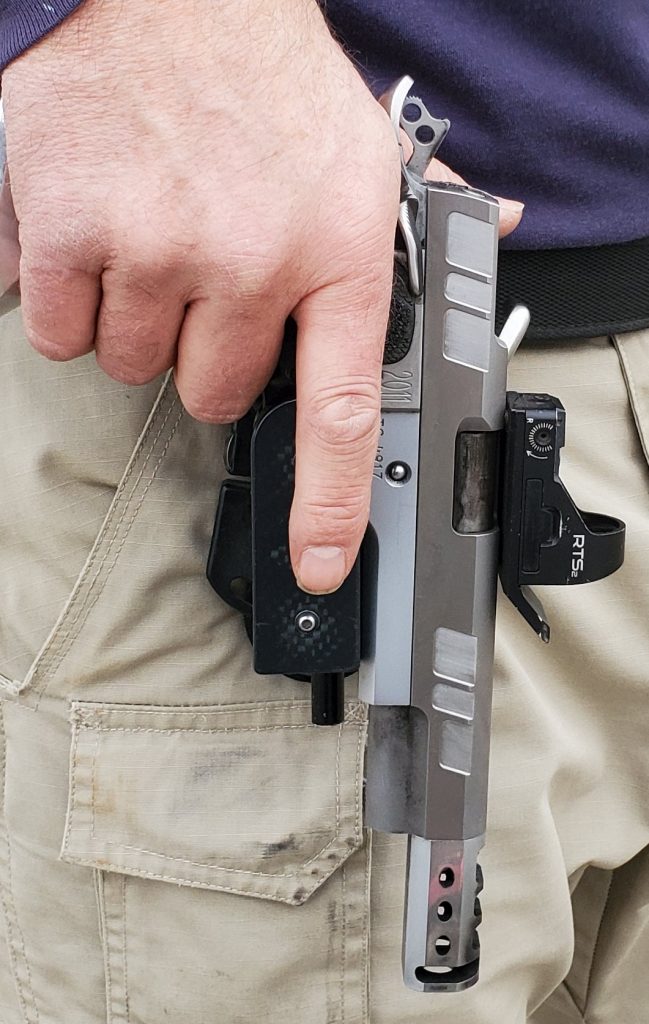“A competitor holsters their loaded single action pistol with the safety off, but flicks the safety on before removing their hand from the pistol. What is your call?” I won’t lie. The results of this Question of the Month have us a bit stunned. We didn’t think that this question would have results like this:

The results clearly indicate that this was a good question to ask, and that this post is needed. The correct answer is a DQ per 10.5.11.1. The competitor holstered the loaded handgun with the safety not applied.
But why did so many folks say it was no call? Probably because 10.5.11 deals with holstering or placing a loaded gun on a surface. For loaded guns placed on a surface, without the safety on, we teach that it isn’t a DQ until the competitor’s hand is removed from the firearm. This is because the trigger is exposed and the competitor is still handling the firearm until they are not. So, placing a loaded firearm on a table, and flicking the safety on before removing your hand is okay.
However, the same is not true about holsters. Inserting a loaded handgun, without the safety engaged, into a holster where objects can possibly pull the trigger is quite dangerous. Engaging the safety before even moving towards the holster is the safest course of action. Not to mention that 10.5.1 has a very obvious, bolded statement that says, “All these conditions apply the entire time the firearm is in the holster or placed on an object as required by the Written Stage Briefing.” Which means that the safety must be engaged when a loaded handgun is holstered.
I know some folks were asking for a definition of when a firearm is holstered, and pointed out that the rulebook defines ‘Draw’ but not holstered. When the glossary doesn’t spell out a specific definition, we default to the common definition of ‘holster’ from the dictionary: put (a gun) into it’s holster. So, whenever there is movement to place the pistol in a holster, the safety needs to be on. But remember that the DQ doesn’t occur until the firearm is in the holster with the safety off, and it doesn’t matter if the competitor’s hand is still on the pistol or not because the trigger is not accessible.
Remember to visit the blog homepage and vote in the current Question of the Month.